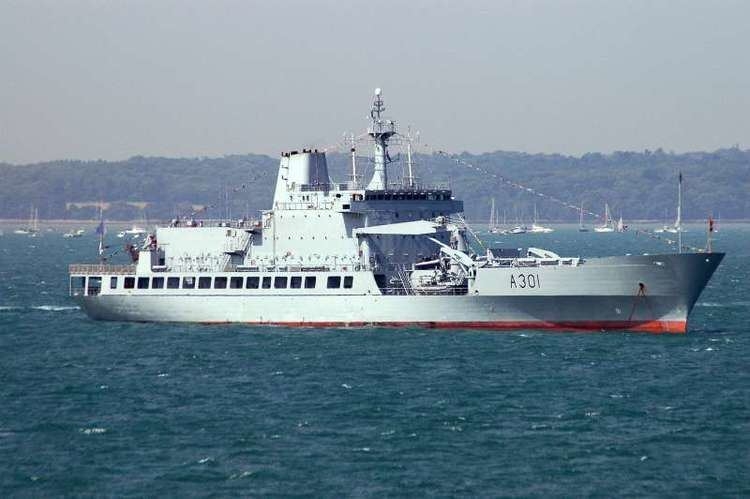The South African Navy is embarking on a critical project to replace its aging combat support vessel, the SAS Drakensberg (A301), which is nearly four decades old and has been inactive for an extended period. Vice Admiral Monde Lobese, the Chief of the South African Navy, announced the forthcoming project during the naming and acceptance ceremony of the SAS King Shaka Zulu, a new multi-purpose inshore patrol vessel.
The SAS Drakensberg, a pivotal component of the Navy’s fleet, is nearing the end of its operational life, prompting the need for a modern replacement. Lobese emphasized the importance of maritime security and highlighted the vessel’s role in the broader defense strategy. The new combat support vessel project is expected to commence soon, addressing the challenges posed by the aging SAS Drakensberg. South African-based DefenceWeb reports.
The replacement project raises questions about funding, given the constraints faced by the Navy, which had to reduce its patrol vessel numbers under Project Biro. Lobese stressed the need for additional inshore and offshore patrol vessels, suggesting an ambitious plan to bolster South Africa’s maritime domain projection.
“If we take our maritime security seriously, and if we want to protect our maritime economy, we need at least another 12 ships, of which six must be the larger offshore patrol vessels,” Lobese asserted. He argued that such an investment over a 30-year period would yield substantial benefits by preventing theft of marine resources and countering criminal activities in South Africa’s oceans.
The SAS Drakensberg, a versatile vessel used for replenishment, patrolling, and supporting various naval operations, has been out of service for the past four years. Its absence has underscored the need for a capable replacement, prompting the Navy to explore options for a new vessel as far back as 2015.
The replacement project aligns with South Africa’s commitment to maritime security and safeguarding its economic interests. Lobese emphasized the strategic importance of maintaining critical capabilities, such as anti-mine warfare, through initiatives like Project Motso, which involves containerizing this capability for deployment on vessels.
In 2011, Drakensberg was sent to West Africa, officially for training purposes. The deployment drew criticism from the Economic Community of West African States (ECOWAS), who claimed that the deployment was related to ongoing conflict in Cote d’Ivoire. Also, in 2020, the Drakensberg engaged in counter-piracy patrols off the coast of Mozambique.
While the SAS Drakensberg replacement is on the horizon, the South African Navy anticipates the introduction of several new platforms in the coming years. The planned addition of four new classes of vessels, including offshore and inshore patrol vessels, harbor tugs, and a hydrographic survey ship, demonstrates the Navy’s commitment to modernizing its fleet.
As the Navy looks to the future, these strategic initiatives underscore South Africa’s dedication to maritime defense and highlight the importance of investing in advanced naval capabilities to secure its coastal regions, monitor maritime activities, and respond effectively to emerging security challenges.





